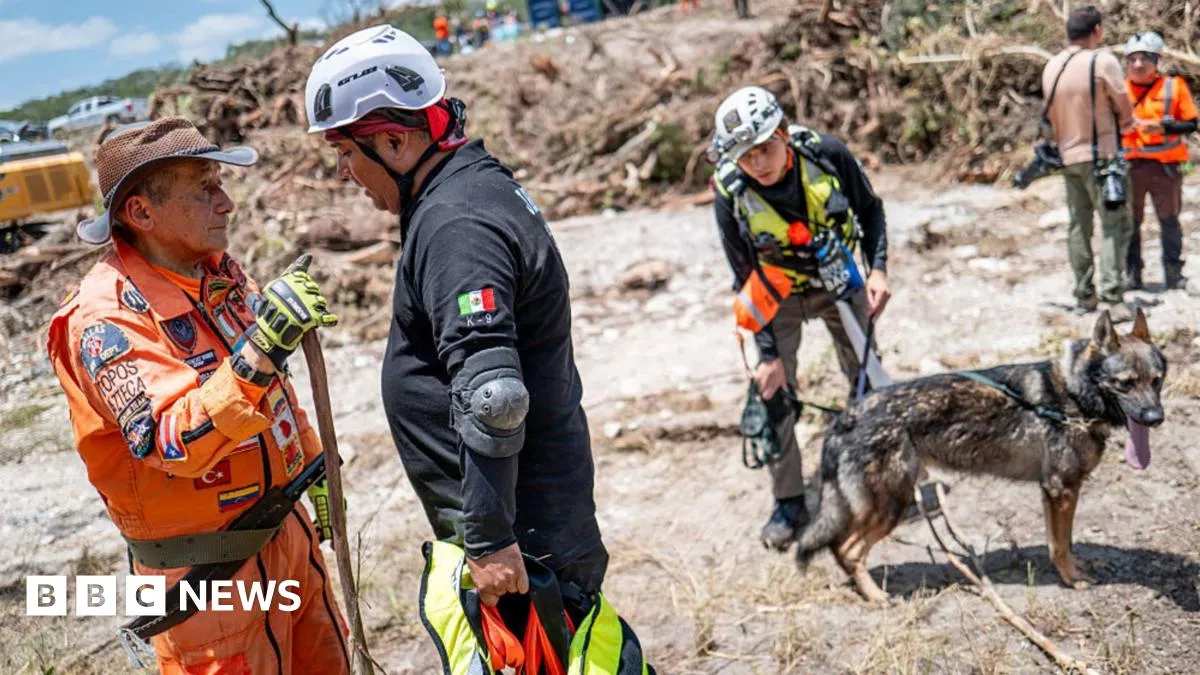
President Donald Trump is set to arrive in Texas, a state that has consistently shown its support for him in previous elections. This unwavering loyalty is reflected in Trump's positive remarks about Texas' Republican Governor Greg Abbott, contrasting sharply with his criticism of California Governor Gavin Newsom during recent wildfires in the Democratic-led state. However, a paradox emerges in Kerr County, where many of Trump's supporters are advocating for government assistance to help them rebuild, despite previously supporting cuts to federal agencies. Reports indicate that Trump may be reconsidering his stance on abolishing the Federal Emergency Management Agency (FEMA), as his administration faces scrutiny regarding disaster response.
With the death toll in Texas surpassing 120, critical questions are arising about the adequacy of flood warnings and the evacuation procedures prior to the catastrophic flooding. The Guadalupe River experienced a dramatic rise of 26 feet within just 45 minutes early on Friday morning, leading to widespread flooding. Although several flood warnings were issued by the Texas Division of Emergency Management (TDEM) and the National Weather Service (NWS), many residents reported confusion regarding the seriousness of these alerts. Some individuals stated they did not receive any warnings at all, raising further concerns about the effectiveness of the communication systems in place.
As climate change continues to be a pressing global issue, its influence on extreme weather events cannot be overlooked. Although attributing a specific weather event solely to climate change is challenging, scientists note that rising sea surface temperatures in the Gulf of Mexico have led to increased evaporation and, consequently, more moisture in the atmosphere. This phenomenon contributes to the intensity of storms and flooding, with 2024 already being a record-breaking year for atmospheric moisture, as reported by Copernicus climate data. Experts warn that such extreme rainfall events, similar to those experienced in Texas, will become more frequent as the planet continues to warm.
In a notable development, Melania Trump will accompany the President on his visit to Texas—a rare occurrence during his trips outside of Washington. While she is occasionally present at White House events, her involvement in disaster response visits is uncommon. Previously, she joined Trump in North Carolina after Hurricane Helene and visited California to assess wildfire damage. Her presence in Texas underscores the significance of the disaster and the White House's aim to focus on the affected families.
As President Trump prepares for his visit, he is likely to encounter challenging questions regarding the emergency alert system and its effectiveness in communicating impending dangers to residents. During a brief appearance at the White House, he mentioned his intention to meet with "great families," hinting at the emotional discussions that may unfold. Trump has previously characterized the flooding as a "once in every 200 years" event, even acknowledging that better alerts could have made a difference. However, he will likely face scrutiny over proposed changes to FEMA and whether staffing cuts at the NWS and NOAA impacted the adequacy of emergency communications.
In light of the devastating floods, a relief fund aimed at supporting residents of Kerr County has garnered significant attention, raising over $30 million since its launch on July 4. According to CEO Austin Dickson of the Community Foundation of the Texas Hill Country, more than 100,000 donors have contributed to the fund, highlighting a remarkable outpouring of community support. Congressman Chip Roy confirmed that $5 million has already been distributed to aid recovery efforts, providing assistance in various forms, including cash payments, gift cards, and loans for local businesses.
New evidence has emerged regarding the timing of emergency alerts during the floods, with a Texas firefighter expressing concerns about the lack of timely notifications to residents. Audio recordings indicate that a request for a flood alert was made an hour before the first warnings were issued, raising alarm about potential delays in communication. Local officials are facing intense scrutiny over the timeline of these alerts, especially considering the tragic loss of life, with 96 fatalities reported in Kerr County alone and over 160 individuals still unaccounted for. As the investigation continues, residents and families affected by the flooding are left seeking answers and accountability.